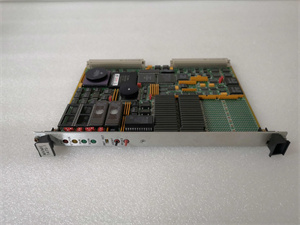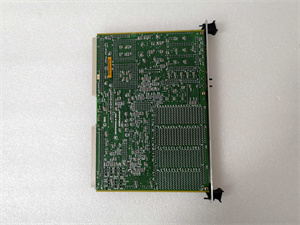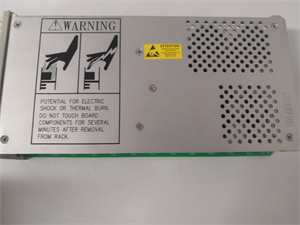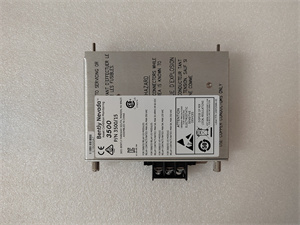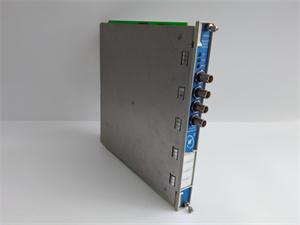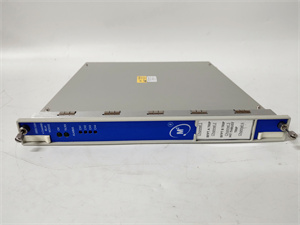Description
Motorola MVME147S – 1 Product Description
Detailed parameter table
| Parameter name | Parameter value |
|---|---|
| Product model | MVME147S – 1 |
| Manufacturer | Motorola |
| Product category | Embedded single – board computer module |
| Processor | MC68030 running at 33 MHz |
| Memory | 8 MB of on – board DRAM, expandable up to 32 MB |
| Floating – point coprocessor | Optional MC68882 support |
| Serial ports | 4 RS – 232 ports with 16 – byte transmit and receive FIFOs |
| Communication interfaces | 10/100Base – T Ethernet interface, SCSI interface |
| VMEbus interface | Full VMEbus master and slave capabilities, supports A32/D32 addressing |
| Operating temperature range | 0°C – 60°C |
| Storage temperature range | – 40°C – 85°C |
| Dimensions | 160 mm x 233.35 mm (6.3 in x 9.2 in) |
| Weight | Approximately 0.9 kg |
| Power supply requirements | +5 VDC ± 5%, 4.5 A maximum current draw |
| Watchdog timer | On – board watchdog timer for enhanced system reliability |
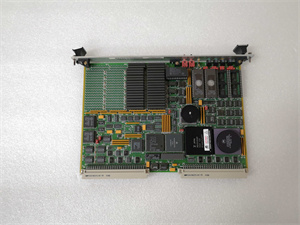
MVME147S-1
Product introduction
The Motorola MVME147S – 1 is a high – performance embedded single – board computer module developed by Motorola, a trusted name in industrial technology. Designed for demanding industrial automation and control applications, this module serves as a robust foundation for a wide range of systems.
At its core, the MVME147S – 1 features an MC68030 processor running at 33 MHz, providing ample processing power for complex computational tasks. With 8 MB of on – board DRAM, expandable up to 32 MB, it can handle large amounts of data, making it suitable for real – time control and data – intensive operations. The module’s support for an optional MC68882 floating – point coprocessor further boosts its numerical processing capabilities. Equipped with multiple communication interfaces, including 4 RS – 232 ports, a 10/100Base – T Ethernet interface, and an SCSI interface, the MVME147S – 1 can seamlessly integrate with various sensors, actuators, and other devices in an automation ecosystem, enabling efficient data transfer and system control.
Core advantages and technical highlights
Superior processing performance
The MVME147S – 1‘s 33 MHz MC68030 processor offers fast and reliable processing, ensuring smooth operation even in data – driven industrial applications. Whether it’s processing sensor data in real – time on a manufacturing line or running complex control algorithms in a power plant, this module can handle the load with ease. The option to add an MC68882 floating – point coprocessor allows for highly accurate numerical calculations, which is crucial in applications such as precision manufacturing and scientific data analysis.
Versatile connectivity
With its diverse range of communication interfaces, the MVME147S – 1 stands out in terms of connectivity. The 4 RS – 232 ports enable connection to legacy devices and serial – based sensors, while the 10/100Base – T Ethernet interface provides high – speed network connectivity for modern industrial setups. This allows for seamless integration with other control systems, cloud – based monitoring platforms, and enterprise networks. The SCSI interface ensures fast data transfer to and from storage devices, facilitating efficient data management and storage in applications that require large – scale data handling.
Reliable and rugged design
Built to withstand the rigors of industrial environments, the MVME147S – 1 has an operating temperature range of 0°C – 60°C and a storage temperature range of – 40°C – 85°C. Its robust construction and on – board watchdog timer enhance system reliability by detecting and recovering from software or hardware malfunctions. This makes it suitable for deployment in harsh industrial settings, such as factories with high levels of vibration, dust, and temperature fluctuations, ensuring continuous and stable operation.


MVME147S-1
Typical application scenarios
Manufacturing automation
In manufacturing plants, the Motorola MVME147S – 1 can be the heart of automated production lines. It can receive data from a multitude of sensors monitoring parameters like temperature, pressure, and position of machinery and products. Based on this real – time data, it can send precise control signals to actuators, robotic arms, and conveyor systems. For example, in an automotive assembly line, it can coordinate the movement of parts, ensuring that each component is accurately positioned for assembly, thereby increasing production efficiency and reducing errors.
Power generation and distribution
In power plants, the MVME147S – 1 can play a vital role in monitoring and controlling various processes. It can manage the operation of generators, turbines, and power distribution systems by processing data from sensors that measure electrical parameters, fuel levels, and mechanical conditions. By analyzing this data in real – time, it can optimize power generation, ensure grid stability, and prevent equipment failures. Additionally, its network connectivity allows for remote monitoring and control, enabling operators to manage the power plant efficiently from a central location.
Process control in chemical plants
In chemical processing facilities, the MVME147S – 1 can be used to control complex chemical reactions. It can interface with sensors that monitor factors such as chemical concentrations, reaction temperatures, and pressures. Based on the data, it can adjust the flow rates of reactants, control heating and cooling systems, and ensure that chemical processes occur safely and efficiently. The module’s ability to handle precise numerical calculations is essential for maintaining the correct chemical ratios and reaction conditions, ensuring product quality and consistency.
Related model recommendations
MVME147SRF
The MVME147SRF is related to the MVME147S – 1 but lacks an Ethernet interface, which the MVME147S – 1 has. The MVME147SRF may be suitable for applications where Ethernet connectivity is not required, while the MVME147S – 1 offers more modern network – based integration capabilities.
MVME147 – 013A
This model shares similarities with the MVME147S – 1 in terms of basic architecture but may offer different memory configurations or performance optimizations. The MVME147 – 013A could be an alternative for applications that need specific memory upgrades or different processing – related features.
MVME162 – 012
The MVME162 – 012 uses a different processor architecture compared to the MVME147S – 1. It offers higher – performance processing in some aspects and may be suitable for applications that require more advanced computing power, such as high – speed data analytics, while the MVME147S – 1 provides a reliable and cost – effective solution for more standard industrial control tasks.
MVME5100
The MVME5100 is part of a more advanced product line. It features modern interfaces like Gigabit Ethernet, PCI – X, and USB, along with a more powerful integrated processor. It can be seen as an upgrade option for applications that outgrow the capabilities of the MVME147S – 1, especially those that need to integrate with emerging industrial technologies and handle large – scale data communication.
MVME2434
This model has a different form factor and functionality in some respects. It can be used in applications where a different physical layout or specific I/O capabilities are required. While it may not directly replace the MVME147S – 1, it offers an alternative solution for certain industrial control and automation setups.
Installation, commissioning and maintenance instructions
Installation preparation
Before installing the Motorola MVME147S – 1, ensure the installation environment is clean, dry, and free from excessive dust and moisture. The ambient temperature should be within the 0°C – 60°C operating range. Use appropriate anti – static wrist straps and tools to handle the module to prevent electrostatic discharge damage to sensitive components. When installing in a VMEbus system, make sure the VMEbus backplane is properly configured and powered off. Carefully align the MVME147S – 1 with the VMEbus slot and gently insert it, ensuring a secure connection. Connect the power supply cables according to the provided wiring diagram, double – checking that the +5 VDC power is within the ± 5% tolerance range.
Maintenance suggestions
Regularly inspect the MVME147S – 1 for any signs of physical damage, such as bent pins or cracked circuit boards. Clean the module using a static – free, dry cloth to remove dust that could affect its performance. Periodically test the functionality of all interfaces, including the serial ports, Ethernet, and SCSI, by running diagnostic software. If any issues arise, start by checking the physical connections and power supply. In case of a malfunction, refer to the Motorola technical documentation for troubleshooting steps. When replacing components, always use genuine Motorola parts to maintain the module’s reliability and compatibility. Keep a record of all maintenance activities, including date, actions taken, and any issues resolved, for future reference.
Service and guarantee commitment
Motorola stands firmly behind the Motorola MVME147S – 1. Every module undergoes strict quality control processes during manufacturing to meet international standards. Motorola offers a comprehensive warranty period, covering any manufacturing defects that may occur. In the event of issues during the warranty period, Motorola’s experienced global technical support team is available around the clock. They can provide detailed guidance on installation, efficient troubleshooting, and maintenance. Motorola also invests continuously in research and development to enhance the performance of the MVME147S – 1 and may release software updates to improve functionality and compatibility. The company provides extensive documentation, including user manuals and technical guides, to assist users in maximizing the potential of the MVME147S – 1. This commitment reflects Motorola’s confidence in the product’s quality and its dedication to customer satisfaction in the industrial control field.

